Even craftswomen who are just learning this handicraft can knit seamless socks on two knitting needles. These slippers are easy to make using different knitting techniques. This can be a raised pattern, a flat surface or a pattern. Single-color or melange yarn is suitable for the product.
Features of knitting socks on 2 needles
Hand-knitted slippers are comfortable and practical. They are used as regular slippers or ballet shoes. They are knitted quite quickly even by an inexperienced needlewoman, and almost any thread is suitable for their production. The features of these cozy slippers are the speed and rapidity of their production, the ability to choose the knitting method, decoration, and the use of leftover multi-colored yarn. You will also need a minimum of tools to make them.
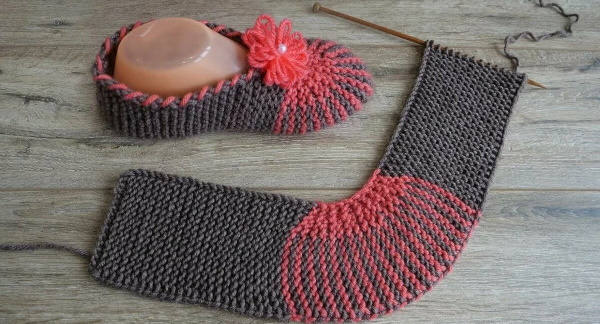
Such slippers are knitted using various methods, such as satin stitch, openwork, with or without a seam. The knitting needles can be not only circular, but also regular straight ones. Experienced knitters initially advise choosing the simplest methods for creating slippers, such as knitting with a knitted satin stitch and a technology that does not have sewn seams.
What yarn to knit socks with
For knitting socks, different types of yarn are usually used, depending on their composition, shade, thickness, made of natural and artificial fibers, for example:
- ordinary wool;
- silk, linen, cotton threads;
- cashmere;
- mohair;
- self-spun thread;
- "boucle";
- melange yarn;
- angora;
- "flame".

When choosing yarn, experienced knitters recommend paying attention, first of all, to the structure and quality of the threads. It is better to use a breathable material that has fairly high thermal properties, but has a low degree of electrification. Flax, acrylic or natural yarn containing artificial thread in a ratio of 50X50 are suitable.
You can take the remains of wool of different shades and densities. They are easy to combine to get modern multi-colored socks. The heel and sole are very easy to thicken if you add a nylon thread. The product will be more wear-resistant. Yarn is also selected taking into account the seasons. Cashmere, wool, semi-wool are suitable for winter days. For spring, it is preferable to take acrylic, cotton, bamboo.
It is very important that the material used for the footies is soft to the touch, warms the feet, and does not irritate the skin. For the creation of children's products, it is preferable to choose special hypoallergenic yarn of various colors.
Symbols and abbreviations in knitting patterns
Legend:
| Designation | Definition |
| persons. | Face loops |
| r. | Row |
| out. | Purl stitches |
| nak. | Yarn over |
| p. | Loop |
| vm. | together |
| chrome. | Edge loops |
| Art. w/o n | Single crochet |
| Wed. p. | Middle loops |
| prev. art. | Front wall |
| work. p. | Working loops |
Master classes on knitting socks on 2 needles
It is easy to knit seamless socks on two knitting needles by studying the step-by-step descriptions.
Plain socks made of thin yarn
To work, you need to prepare circular knitting needles No. 3.5 – 4 and thin semi-woolen yarn.
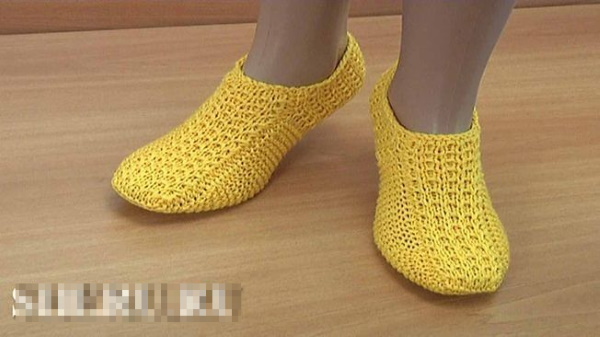
Take a thread folded in three.
Technique of execution:
- Cast on 33 sts.
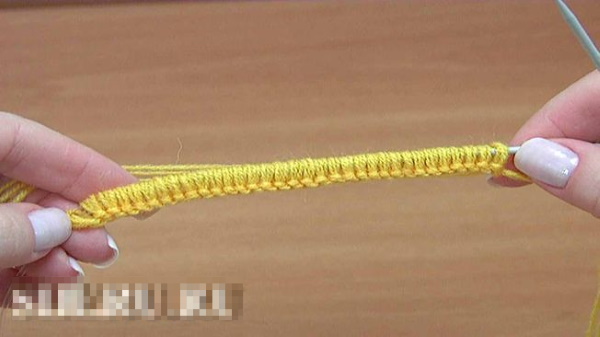
- The main pattern is knitted.
- In the next three rows, knit the initial and final loops with edge stitches.
- 1st row – persons only.
- 2nd row – all purl.
- 3rd row – 1 persons. is hooked to the front wall, 1 is removed, but not knitted. The thread is left behind the work. The rapport is repeated to the very end of the row.
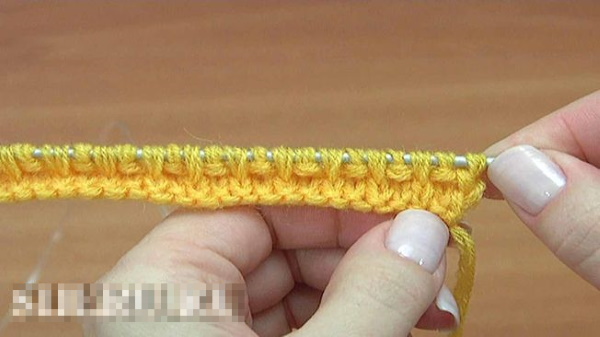
- 4th row. The actions are repeated. But the thread is left in front of the work. Knitting continues as in the 3rd row.
- 5 – 28th row – Loops are knitted as from 1 to 4 rows.
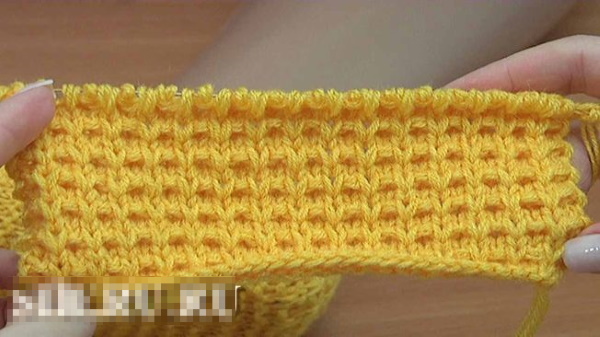
- The back of the heel is now complete.
- Next, the heel part in the foot area is designed. And the fabric is knitted with a "garter stitch".
- Row 29 – edge. Knit 10 front and the same number of middle front. Knit the next 2 sts together purlwise. Turn the product.
- Then knit 11 sts.
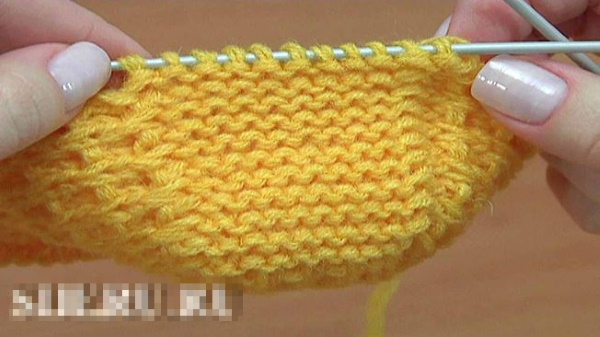
- Row 30 – Knit 1 edge, knit 9 front sts.
- In the same row, 2 double sts are knitted 1 front. behind the back wall. The product is turned again.
- Row 31 – Knit the edge, knit 9, purl 2 together. Turn the slipper again.
- Then these last 2 rows alternate.
- As a result, only 11 sts remain on the needles.
- The heel is being formed.
- Then 10 sts are added to the edge st of the main fabric.
- To do this, turn the product inside out.
- The needle is inserted under the edge of the stitch.
- And then a thread is pulled through it.
- The work is turned again. All loops are knitted as front loops behind the front wall.
- Then, on the other side of the fabric, cast on another 10 sts.
- Turn the product over and continue knitting with knit stitches until the row ends.
- Next, knit a straight piece up to the toe part.
- The sizes are calculated individually.
- Should be 2/3 of the total length of the insole.
- This pattern will have 34 rows of garter stitch.
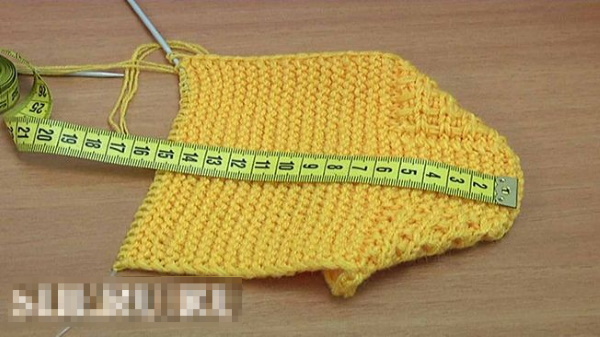
The toe part is knitted by making decreases.
| Row | Loops |
| 1 | 1 edge, 2 persons together, 11 persons. 3 together persons behind front st., 11 persons, 2 p. together persons. Last edge. |
| 2 | Only persons. |
| 3 | 1 edge, 2 persons together, 9 persons.
3 persons together, 9 persons, 2 persons together. chrome. |
| 4 | Knit as in row 2. |
| 5 | edge, 2 persons. together, 7 persons. 3 together, 7 persons., 2 together edge. |
| 6 | As 2nd row. |
| 7 | Knit stitch, no decreases. |
| 8 | |
| 9 | There are 5 working loops on each side of the fabric. Knit and decrease. |
| 10 | Only knit stitches, but no decreases. |
| 11 | |
| 12 | |
| 13 | Knit, decreasing. 3 slave sts. 11 sts remain on the needle. |
| 14 | Knit the front sts. Do not decrease. |
| 15 | |
| 16 |
They are decorating the top of the sock.
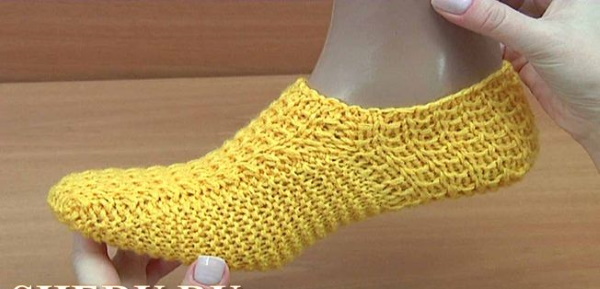
Basic pattern:
- In the 1st row, transfer the last edge stitch to the right knitting needle.
- The thread is left before work.
- With the left knitting needle, grab the lower part of the second edge of the foot fabric so that the upper part is attached to the lower part.
- The loop previously removed to the right is attached to this loop.
- They are both knitted purlwise.
- In the 2nd row, similar actions are performed, but the working thread is left behind the removed edge loop.
- And the edge of the fabric is captured by the back part of the loop.
- In the purl rows, the outer loops are knitted together.
- The working loops are closed with knit stitches before making the final joining.
Colored slippers
On two knitting needles, knit seamless slippers using the remains of multi-colored threads or melange yarn. You will get colorful beautiful slippers. This model is suitable for foot size 36 - 38. You will need regular knitting needles No. 2 - 2.5. The threads can be changed after 2 - 3 rows.

Initial steps:
- Cast on 30 sts.
- 1 – 6th row – persons.
- Rows 7-22 are knitted with the “front surface” stitch.
- Next, knit the heel.
23rd row:
- 19 persons., 20 and 21 sts together. Knit the product. Turn it over.
- Knit 9 persons., 10 and 11 sts are knitted together. 1 persons.
- The trail turns again.
- Continue knitting in this manner. There should be 10 central loops left on the knitting needle.
- In other words, knit 1 st together from the middle and side.
42nd row:
- 10 sts are added from the side area. The product is turned again.
43rd p.:
- Knit 20 faces.
- Again, cast on 10 sts, but on the other side of the heel piece.
- There should be 30 sts on the needle. Or their original number.
44 – 74th row:
- Knit using the "garter stitch" technique.
Then they make decreases.
| Row | Loops | |||||
| 75 | Persons. | 7 | 3 vm. | 10 | 3 vm. | 7 |
| 76 | Out. | |||||
| 77 | Persons. | 6 | 3 vm. | 8 | 3 vm. | 6 |
| 78 | Out. | |||||
| 79 | Persons. | 5 | 3 vm. | 6 | 3 vm. | 5 |
| 80 | Out. | |||||
| 81 | Persons. | 4 | 3 vm. | 4 | 3 vm. | 4 |
| 82 | Out. | |||||
| 83 | Persons. | 3 | 3 vm. | 2 vm. | 3 vm. | 3 |
Then knitting is carried out using the following technology:
84th p.:
- The remaining 9 sts are knitted as purl.
- From the side part of the sole, knit the 10th loop.
- So, on each side of the fabric, along its entire remaining length, cast on 18 sts.
85th p.:
- Knit 7 persons. The last 3 are knitted together.
- Then from the side area knit 3 front and 1 p.
Completion:
- Again, gather 9 sts on the needle.
- Then alternate the last 2 rows until you have knitted all 18 sts on each side.
- The remaining 9 sts are closed.
Simple seamless footprints
Footprints on two knitting needles without a seam are easy and quick to knit, so even a beginner needlewoman can handle them.
Technique of execution:
Start:
- Cast on 49 sts onto the needles.
- 3 rows are knitted with a 1X1 elastic band (front, back) forward and back.
4th row:
- 23 sts are also knitted with 1X elastic
- Then alternate 1 yarn over with 1 knit. Total 7 sts. Last loop – yarn over.
- Next, knit another 23 sts with 1X elastic.
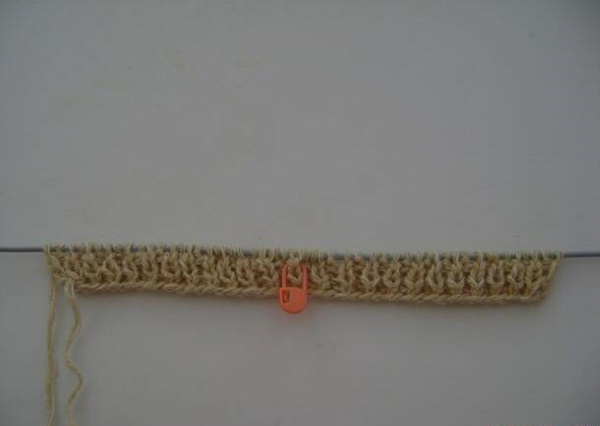
5th row:
- This and all the purl rows are knitted according to the pattern. That is, 23 sts are again knitted with a 1X elastic band.
- All yarn overs and the ones between them are knitted purlwise.
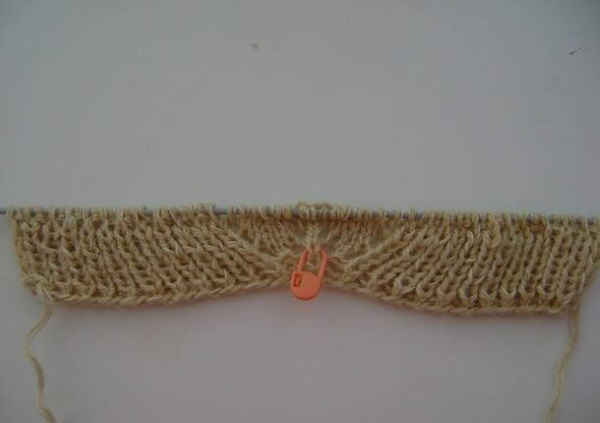
Next, knit until 10 holes are formed:
- Then 6 rows are knitted in garter stitch.

- However, the 6th row is knitted only to the middle.
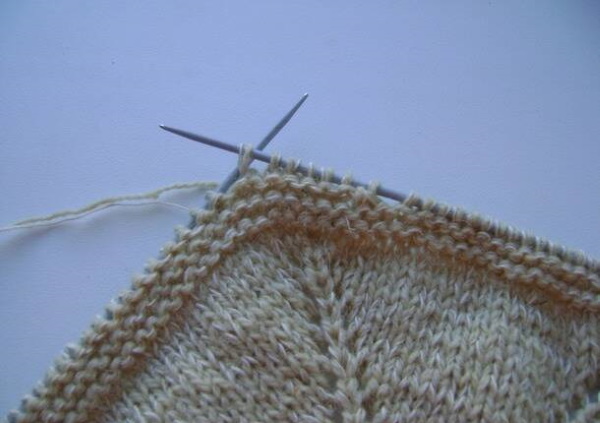
- Then, using garter stitch, knit only the 7 central loops.
- In other words, only the total number of loops is counted. From this number, 7 sts (loop soles) are subtracted.
- They are divided by 2.
- In this model, knit 41 sts and 6 sts.
- 7, 8 sts are knitted together.
- The product is turned over and 6 more stitches are knitted, counting the ones knitted earlier.
- And 7 and 8 sts for the 2nd loops.
- Continue knitting in this manner until there is not a single loop left on the needle except for the 7 sts of the sole.
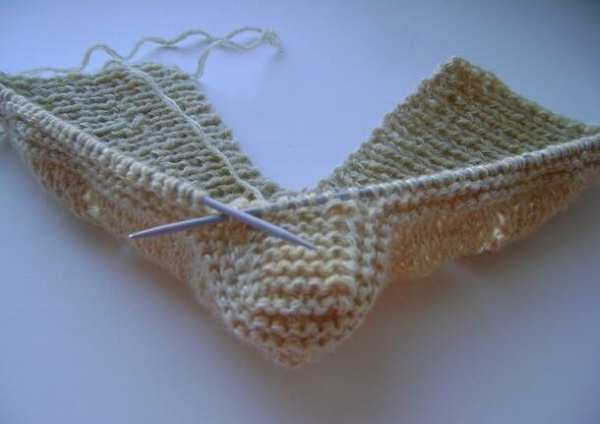
Next, knit the heel piece:
- On the sides of the heel, cast on 14 sts on each side.
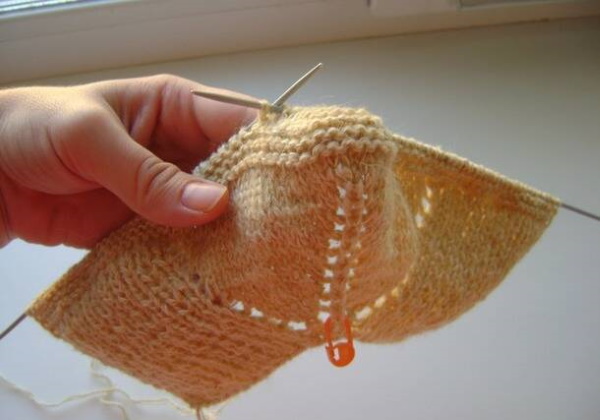
- The heel is knitted in the same way as it was just knitted.

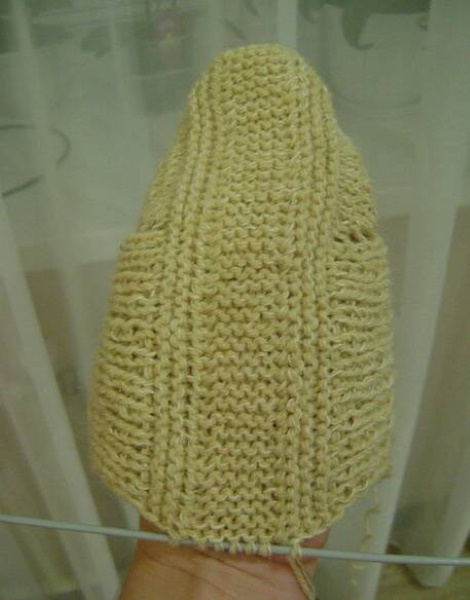

- Once it is knitted, the loops are closed and the thread is cut and hidden.
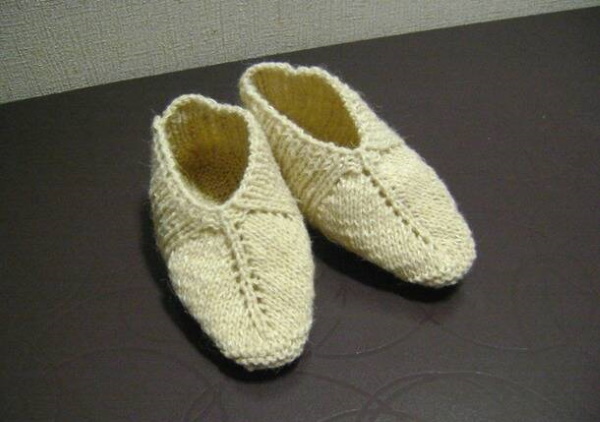
Ready.
Openwork footprints
Footprints on two knitting needles without a seam are also knitted from linen or cotton threads. For example, openwork slippers. They turn out unusually feminine and look very elegant on the feet.

Step by step execution:
- Cast on 57 sts and join them into a circle.
- Then knit 1 row and purl 1 row.
- Next, 12 rows are knitted according to pattern 1.
- The first 16 sts of the row and the same number of the last loops are moved to 1 knitting needle.
- Then 25 sts located in the middle are transferred to an additional knitting needle.
- These loops will later become the beginning of the upper part of the toe.
- From the remaining 32 free sts, knit the heel.
- 5 cm. knit with stocking stitch.
- Then mark the center of the heel with a colored marker.
- In the next 4 rows, decreases are made, starting from the front side.
- In the 1st row, knit all stitches.
- When there are 9 sts left on the needle, knit 2 with a rightward tilt.
- The future slipper is turned inside out.
- Row 2 is knitted purlwise, leaving 9 sts.
- Then knit 2 together purl.
- Similar decreases continue up to 16 sts.
- Then, along the edges of the heel piece, cast on 12 sts on both sides.
- The set aside 25 sts are returned to work and knitting continues in a circle.
- The central 25 sts are separated with markers on both sides.
- The selected loops are knitted with an openwork pattern using diagram 2.
- The remaining loops are knitted with the front surface.
- In the 1st circular row, decreases are made on the sides of this pattern - the outer loops of the foot and toe are knitted together on each side.
- Similar decreases are performed 8 times in every 2nd row.
- Continue knitting until the length is 18 cm from the marker that determines the center of the heel.
Toe
The loops are distributed as follows:
- 24 sts of the foot and 25 sts of the top of the sock.
- They are marked by moving the markers.
- Next, knit with the front surface.
Decreases are made in every second row:
- Knit 1 st together on each side of the marker.
- When there are 9 sts on the knitting needles, cut the thread.
- They are pulled together and secured to the inside of the slipper.
Footprints with a Herringbone pattern
It is quite easy to knit these seamless socks with a Herringbone pattern on two knitting needles.
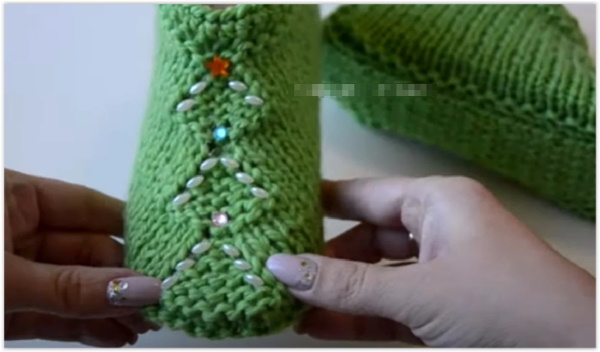
The slippers are very beautiful. They can be presented as a New Year's gift.

Procedure:
- Cast on 31 sts onto the needles.
- Knit 2 rows with front loops.
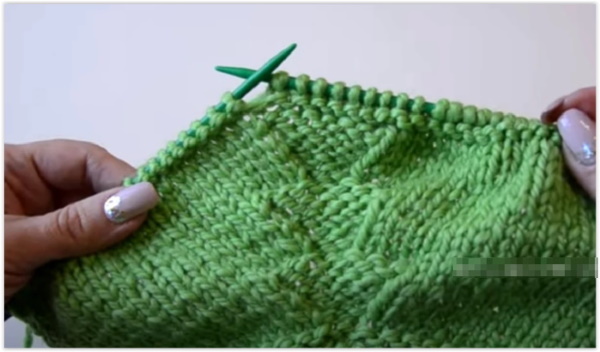
Then knit like this:
| Row | Loops | Total |
| 3 | Edge, 14 persons., yarn over, 1 out., yarn over, 14 persons., edge. | 33 p. |
| 4 | Edge, 14 purl, 3 knit, 14 purl, edge. | |
| 5 | Edge, 14 persons., nak., 3 out., nak., 14 persons., edge. | 35 p. |
| 6 | Edge, 14 purl, 5 knit, 14 purl, edge. | |
| 7 | Edge, 14 persons., nak., 5 out., nak., 14 persons., edge. | 37 p. |
| 8 | Edge, 14 purl, 7 knit, 14 purl, edge. | |
| 9 | Edge, 17 persons., yarn over, 1 out., yarn over, 17 persons., edge. | 39 p. |
| 10 | Edge, 17 purl, 3 knit, 17 purl, edge. | |
| 11 | Edge, 17 persons., nak., 3 out., nak., 17 persons., edge. | 41 p. |
| 12 | Edge, 17 purl, 5 knit, 17 purl, edge. | |
| 13 | Edge, 17 persons., yarn over, 5 out., yarn over, 17 persons., edge. | 43 p. |
| 14 | Edge, 17 purl, 7 knit, 17 purl, edge. | |
| 15 | Edge, 20 persons., yarn over, 1 out., yarn over, 20 persons., edge. | 45 p. |
| 16 | Edge, 20 purl, 3 knit, 20 purl, edge. | |
| 17 | Edge, 20 persons., yarn over, 3 out., yarn over, 21 persons., edge. | 47 p. |
| 18 | Edge, 20 purl, 5 knit, 20 purl, edge. | |
| 19 | Edge, 20 persons., yarn over, 5 out., yarn over, 20 persons., edge. | 47 p. |
| 20 | Edge, 20 purl, 7 knit, 20 purl, edge. | |
| 21 | Edge, all faces, edge. | |
| 22 |
Next, knit the sole:
- In the 1st row knit the edge, 27 knits, 2 purl together. The product is turned at the end of each row.
- In the 2nd row, knit the edge, 7 purl, 2 knits, together.
- In the 3rd row, knit the edge, 7 knits, 2 purl together.
- Then continue knitting according to the same principle, alternating loops in subsequent rows. There should be 9 sts left on the needles.
- Then loops are cast on at the sides and work continues on the middle 9 sts.
- When there are 9 sts left, they are closed.

- The slipper is crocheted using single crochet stitches.
Master class on 2 knitting needles without seams
You can easily and quickly knit slippers on two knitting needles without a seam using the description below. This rather simple master class is suitable for beginners.
Algorithm of actions:
- Cast on 12 sts.
- Knit 8 rows in garter stitch.
- Every 5 sts, make an increase (yarn over, knit, yarn over again). Knit a purl row.
- Then the addition is made using a yarn over before and after the yarn over.
- 3 persons., again nak. Repeat after 5 sts. Perform a purl row.
- Continue knitting until you have 39 sts.
- Knit 15 sts and put aside. Continue knitting on 9 sts. Knit, rounding the heel.
- At the end of the rows, the last loops are knitted together with the 15 sts set aside earlier.
- Leave 9 sts on the loops for work.
- And on each side, cast on 18 sts.
- It turns out 45 p.
- Of these, 1 is edge stitch, 5 are garter stitch, 1 is purl.
- Next 4 persons., 1 out., 21 persons.
- Then knit 1 purl, 4 knit, 1 purl.
- Finish with 5 garter stitches and 1 edge stitch.
- According to this pattern, 40 rows are knitted.
- The heel piece is knitted in the same way as the toe.
- The last rows are knitted in garter stitch and the loops are closed.
Men's Socks (1 model)
These slippers are quite easy to knit following the description below. This model will fit sizes 41 – 44.
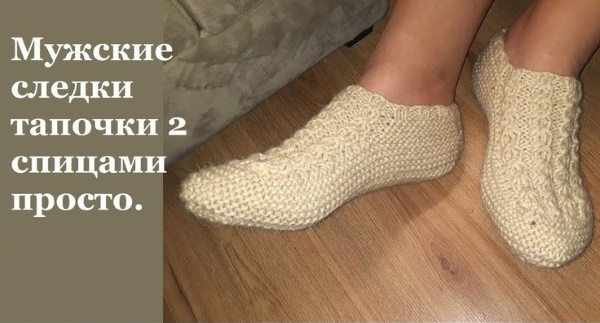
Procedure:
- First, cast on 49 sts.
- 3 rows are knitted with a rib pattern.
- Then 23 loops are also knitted with a rib pattern + yarn over + 1 front + yarn over + front (marked with a marker, since it is the central one).
- Next, yarn over again + 1 knit + yarn over + knit 23 sts again with a rib pattern.
- Then 20 rows are knitted with the wrong side.
- After this, 5 rows are knitted in garter stitch.
- The next row is knitted to half.
- Knitting of the middle 7 sts continues with "garter stitch". At the end of the rows, 2 double stitches are knitted from the front and back.
- They do this until there are only 7 sts in the center.
- From the sides of the elastic, cast on 14 sts to form the heel.
- Continue knitting, knitting 2 sts together in all rows.
- At the end, all loops are closed.
Men's Socks (2nd model)
Another version of men's socks. This master class is also not difficult.

Step by step execution:
- 41 sts are cast on onto the needles.
- 3 rows are knitted in garter stitch.
- It turns out to be a side.
- The connected “braid” is divided into 3 parts.
- The odd loop is marked with a marker. Then knit yarn over + st. + yarn over.
- At the end of the row, knit 5 sts from each needle.
- The 11th st is connected to the side row.
- When the knitting is finished, the fabric is turned over.
- Continue knitting purlwise until you reach the sole loops.
- Finally, several loops of the side rows are tied together. This is how the back is formed.
Footprints on two needles with a sole Braided
The footies are very warm and comfortable. This model is easy to knit. Acrylic yarn with wool thread is used.

Start of execution:
- 24 sts are cast on onto the needles.
- 6 rows are knitted in garter stitch.
- Then add 7 sts at once.
- Cast on 31 sts on the needles.
They knit a pattern.
1st row:
- From 2 persons. knit 2 persons (2 together, without removing, knit the 2nd persons. from the 1st), 1 out.
- Repeat until the end of the row.
2nd row:
- On the back row, all loops are knitted according to the pattern.
- Repeat, alternating rows 1 and 2 to the height of the heel.
Knit the heel:
- All loops are divided by 3.
- 1 extra loop is left on the inside of the heel. 10 persons.
Next comes the braid:
- From 2 points 2 – repeat 4 times, 1 person.
- 21 sts and 22 sts are knitted with 1 front loop.
- Knitting is turned and knitted - edge, 9 out., 10 and 11 are knitted together 1 out.
- The product is unfolded - knit the edge, 1 front, 2 out of 2, repeat 4 times. Then 2 together and so on. Knit until 11 sts remain on the needles.
- The loops are added on the sides of the heel. Then they are knitted to the length of the sole.
- Decreases are made on the sides of the fabric, and the sole part is not touched.
- There should be 17 sts left on the needles.
Knit the upper part:
- Knit the edge, then knit a 1X1 elastic band 7 sts. 3 together, again the same elastic band. Pick up a loop from the edge. Turn the product. Knit, observing the pattern.
- At the end of the row, add 1 st from the edge again. Continue knitting in the same way until you have finished the entire top of the slipper.
- The loops are closed.
Seamless slippers are very convenient and comfortable. Such slippers do not rub your feet. You can wear them at home or wear them in boots. They are very easy to knit on two knitting needles.
Video about knitting socks on two knitting needles without a seam
How to knit socks on two knitting needles:
